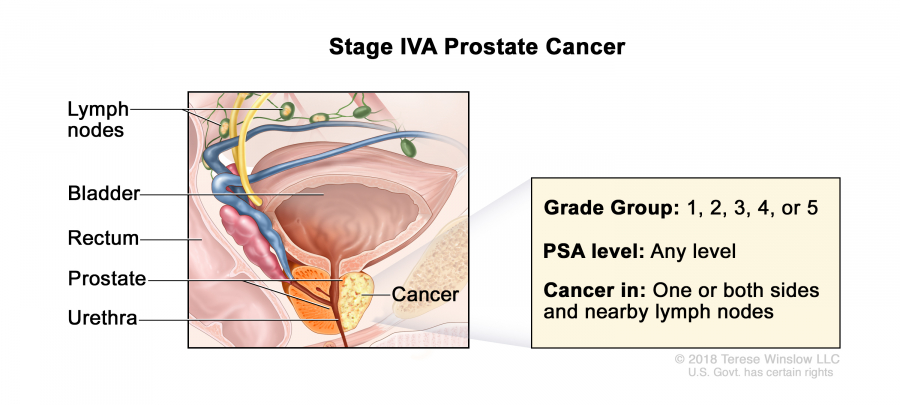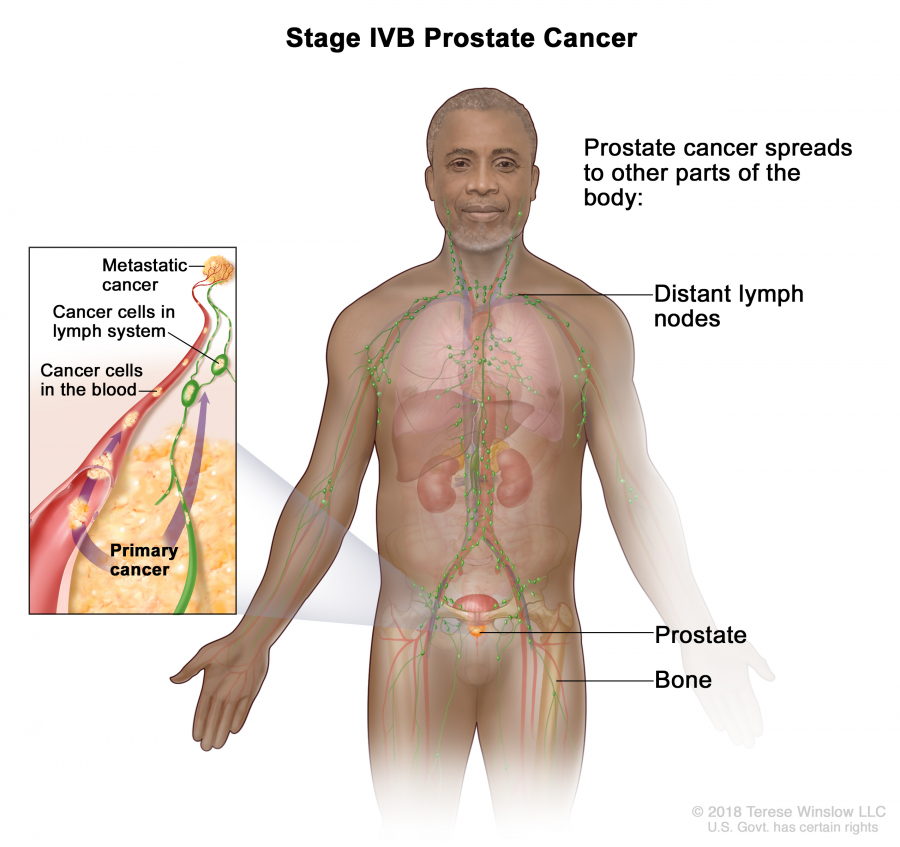Once prostate cancer has been diagnosed, and grade has been established, there may need to be additional testing to see if the cancer has spread outside of the prostate.
- If the Gleason Score is high enough tests may be done such as:
- Bone scan
- MRI and/or CT Scan
- Pelvic lymphadenectomy - removal of lymph nodes in the pelvic area to see if any have been affected.
Based on these results along with the Gleason Score and Grade Group, a stage will be established.
Stages of Prostate Cancer
The cancer can’t be felt during a digital rectal exam, and it can’t be seen on a sonogram. It’s found by chance when surgery is done for another reason, usually for BPH. The cancer is only in the prostate. The grade is G1. Or, the cancer is felt during an exam but is in one-half or less of the prostate and has Grade Group of 1.
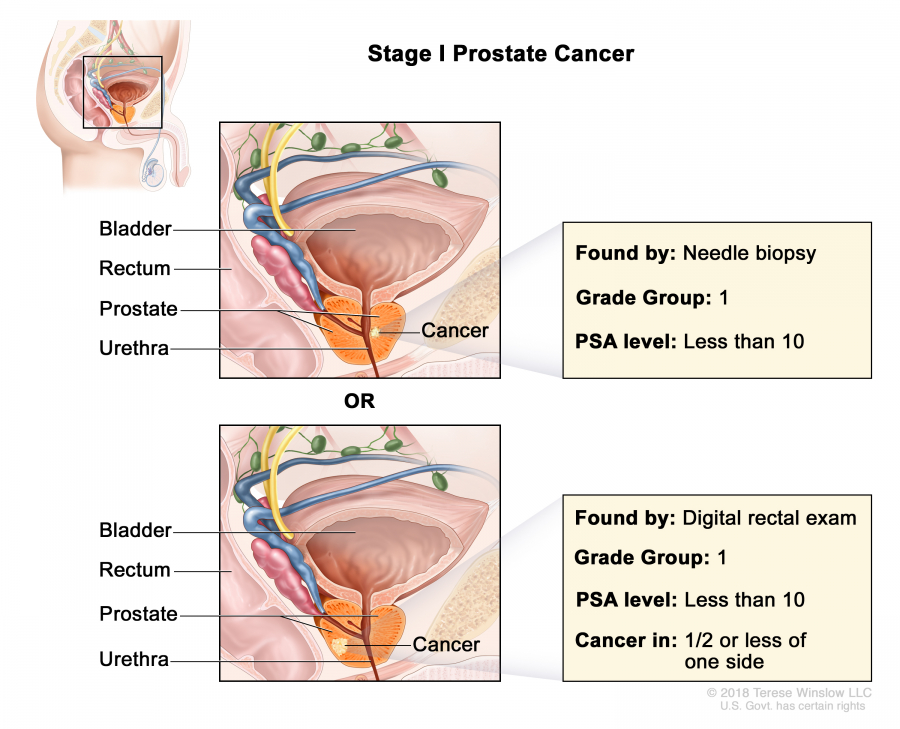
The tumor is more advanced or a higher grade than Stage I, but the tumor doesn’t extend beyond the prostate. It may be felt during a digital rectal exam, or it may be seen on a sonogram. This stage is divided into categories: A, B and C depending on how much cancer is found within the prostate during the biopsy.
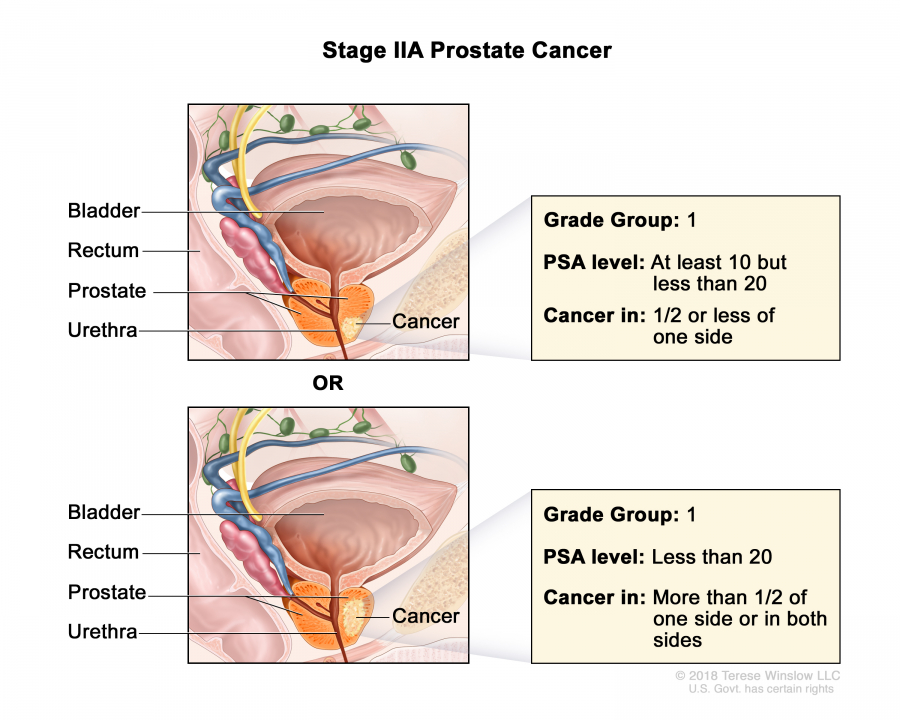
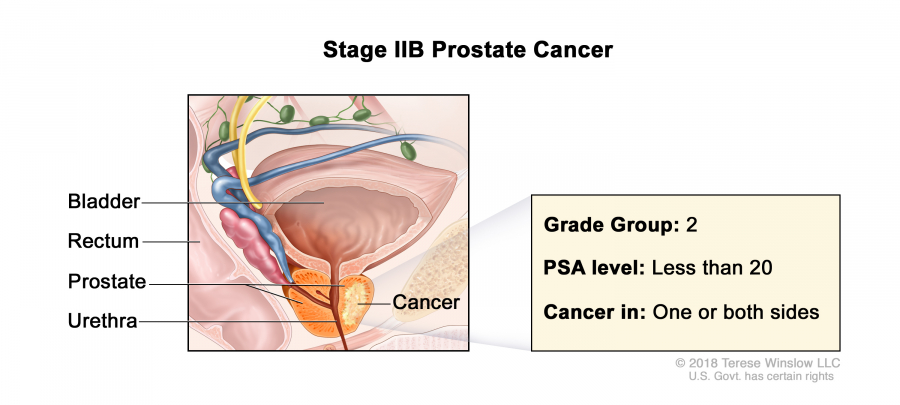
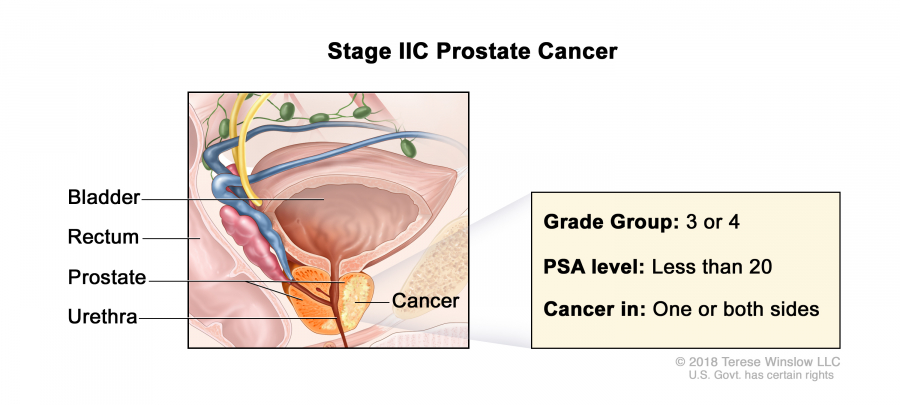
This stage is also split into A, B and C. The cancer may have extended beyond the prostate into the seminal vesicles or to nearby tissue or organs, such as the rectum, bladder, or pelvic wall. It has not, however, spread to the lymph nodes.
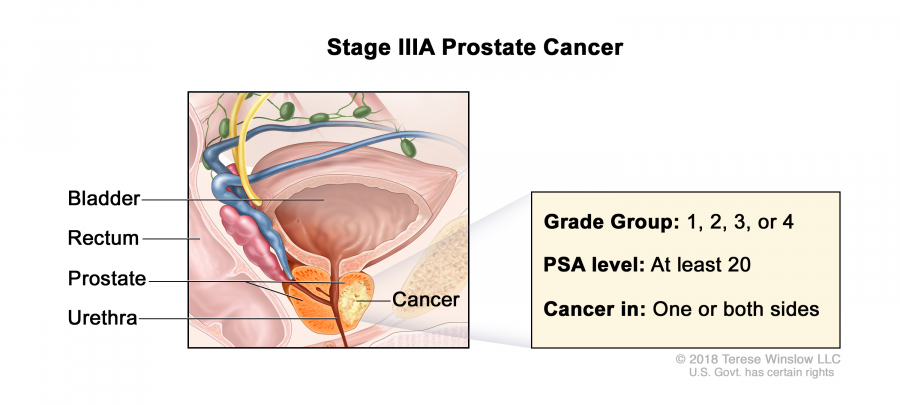
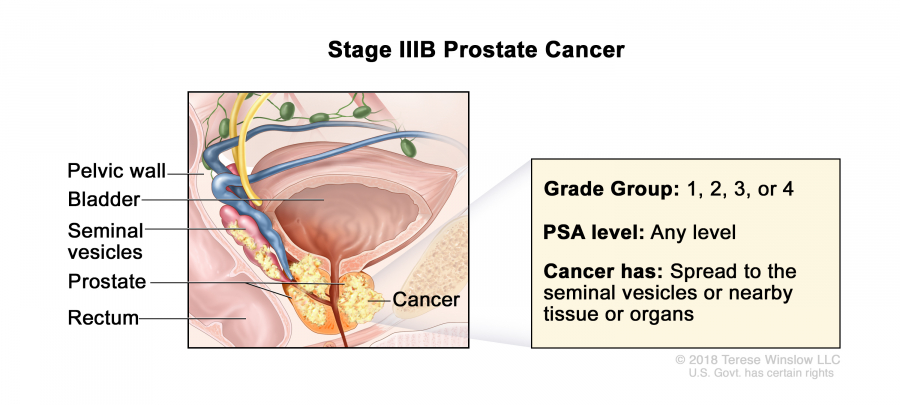
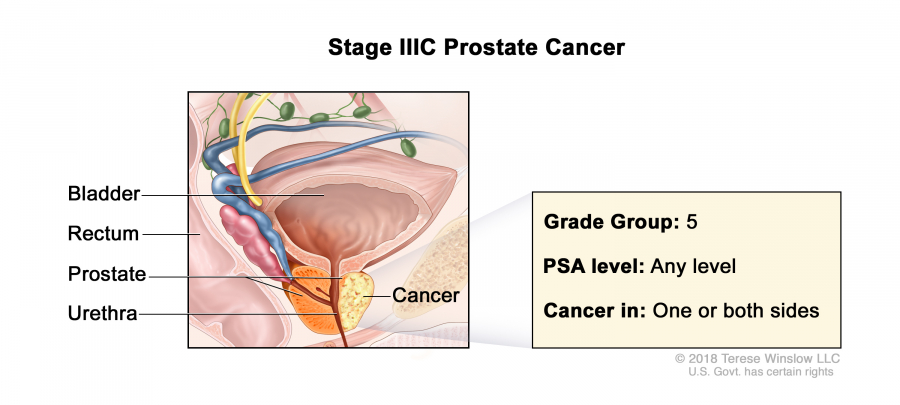
The tumor may have invaded the bladder, rectum, or nearby structures (beyond the seminal vesicles). It has also spread to the lymph nodes, bones, or other parts of the body.
